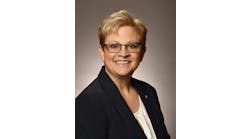Prior to the massive disruption that the COVID-19 pandemic began to wreak on the U.S. healthcare system this spring, the “value train” appeared to moving along its tracks at a regular pace, even if perhaps unevenly. Beyond the federal programs administered by the Centers for Medicare & Medicaid Services (CMS)—the Medicare Shared Savings Program (MSSP) and Next Generation ACO Program, both sponsoring accountable care organizations nationwide—private health insurers had been sprinting ahead with a variety of different types of value-based contracts, including some that are risk-based.
Then COVID-19 hit, scrambling the worlds of both providers and payers. Care delivery patterns have been disrupted, as have many of the care management and business-operational assumptions involved in the contracts. And yet, all of those involved say payer-provider collaboration around population health management through value-based contracting will inevitably move ahead, driven by ever-increasing healthcare system costs, an aging U.S. population, and an ongoing explosion in chronic disease.
“My perspective is that it’s been inevitable getting to this point in terms of value-based contracting, and COVID has actually accelerated it,” says Loren Mann, vice president of client executive relations and the leader of the clinical performance division at the Naperville, Ill.-based Impact Advisors consulting firm. In fact, says the Las Vegas-based Mann, the COVID-19 pandemic has shown both hospital and physician group leaders that developing contracts that reward providers based on quality outcomes will benefit them financially in the long run. And the linchpin in any and all payer-provider collaboration around population health management, he says, will be data.
“Data is key, data is king, data is the Holy Grail; and most of the time, the providers have more data than payers,” Mann says, which is why payer-provider collaboration will inevitably involve cooperation around data. “Providers are looking at integrating their information systems better. So where it has to go is that collaborative piece.” Importantly, he says, “Payers are realizing that the more data they share with providers, the better the outcomes.” And in that context, predictive analytics will become far more widely used.
SDOH seen as an emerging arena of activity
Another key area of emphasis will be activity around social determinants of health (SDOH) data, says Pamela Peele, Ph.D., chief analytics officer at the UPMC Health Plan, a provider-sponsored plan affiliated with the vast UPMC health system based in Pittsburgh. Asked where the U.S. healthcare industry is on the “journey of 1,000 miles” around getting to sophisticated population health management, Peele says, “We’re in the first part of the journey, for sure, and we as a healthcare industry have tried very hard to continue to use the roads we’ve traveled before; but if we want to get to the end of the journey, we have to go down the road of the social determinants of health. We don’t collect that data; we deliver and pay for medicalized services. But if you look at population health and the social influences around health, they’re really about communities, and personal health and education. So where we are in the journey is that we have to come to grips with that, we have to invest in the social aspects of health.”
And one of the underlying challenges, Peele says, is that “We probably need to do more research to understand what’s needed, but we do not systematically collect or integrate data in that area. We don’t have any standards. We have standards all over the place when it comes to medicalized data, and we do that routinely among payers and providers. We know the LOINC codes on pharmacy data, for example. We don’t have any of that on the social influences of health.”
In that regard, Peele says, “Look at what’s happened with COVID-19. When the pandemic landed, because we have no federal guidance, states and localities are deciding on what data to collect. And so as a nation, we don’t have any standardization around the collection of socially-related data. We really need for the federal government to create and enforce standards around that kind of data.”
Still, Peele says, some things have been learned from the healthcare system’s experience of the pandemic. “One is the importance of standardized, collected data, on a nationwide level. The other thing is that we’re going to have to use data sources that scare us. Census data is highly standardized, and there’s tons of it, and it’s very interesting. We’re going to have to learn how to use that data. At UPMC, we have been using Census data for years and years. It’s incredibly helpful. At the most granular census block level, I can see tons of things about education, income, etc., and there is a lot we can infer.” And in that, she emphasizes, “We need for the providers to step up and do tomorrow’s work with us, not yesterday’s work. We need for the providers to step up and not wait to be asked. What they know how to do is yesterday’s work; but we, the payers, don’t know what they know, and vice-versa. So to get to a better place, we need to bring our collective knowledge, the payer knowledge and the provider knowledge, together. We the payers will step up, because we the payers hold the risk already.”
Underlying a lot of collaborative efforts of the past few years has been a tacit understanding on the part of many health plan and provider leaders that the older tug-of-war conflicts between payers and providers have not led to substantial progress around population health. Indeed, the desire on each side for domination for purposes of contract negotiation prowess has only led to an intensified “arms race” and bulking up of both health plans and providers, to the point where both sides have acknowledged each others’ power in individual markets.
In that regard, says Natalie Trebes, a senior researcher at Advisory Board, Washington, D.C. (a division of the Minneapolis-based Optum), the push of just a few years ago on the part of health plans to force the creation of narrow networks has largely failed. “Employers,” Trebes says, “get very nervous when you try to cut out the brand-name academic medical centers. Also, those are going to be the systems most ready to do value-based care contracts. So you get into this weird conundrum of oppositional goals. So the value of narrow networks has not proven itself relative to the sacrifices you have to make relative to other strategic priorities. They would have to get really, really big savings every year, which is a challenge.”
In that context, Trebes says, “Where this is going is to more of this direction of clinician-specific steerage. There is this trend of plans, provider organizations, and employers looking at individual-clinician performance. The goal is, how do we get you to the highest-performing, most cost-effective specialists? And it will vary by specialty. So constructing a network around one organization is not as promising for employers and plans as being able to flexibly route volumes as it is to route patients towards specific specialists. And that goes hand in hand with the idea of achieving greater facility with data, and providing push notifications in the EMR that doesn’t drive clinicians crazy. So there are a lot of elements that will start enabling this more granular steering of patients to individual clinicians. I think that’s where this is heading.”
A push to understand behavioral health concerns in Southern California
One patient care organization whose leaders have been making rapid advances in collaborating with health plans to leverage data for population health management is the MemorialCare Medical Foundation, the physician organization arm of the MemorialCare Health System in Long Beach, California. The Foundation encompasses several medical groups, including the MemorialCare Medical Group, an employed model with about 280 physicians; Greater Newport Physicians, the independent practice association, with about 900 physicians; and a wraparound specialty care network, with about 1,500 physicians. Altogether, given overlapping memberships, MemorialCare Medical Foundation encompasses about 2,000 physicians, and is working with private health plans Anthem, Aetna, UnitedHealthcare, and Blue Shield of California, and is in a direct-to-employer contract with Boeing.
Mark Schafer, M.D., CEO of the MemorialCare Medical Foundation, says that, speaking of the current pandemic, “Of course, with COVID going on, a great amount of our time is spent on protecting our patients, our physicians, and our staff; but we’re still very much focused on quality, value-based care, and lowering the cost of care. We have regular conversations and meetings with our health plan partners, whether they’re ACO or HMO, and are constantly talking about the quality measures and opportunities to improve on the cost of care, particularly on the site of care—making sure that patients are in a site of care that’s better for the patient but at the same time more economical. Thus, our joint ventures around surgery centers and imaging centers. We continue to have regular conversations around how we can improve our processes and share data,” he says.
Importantly, Schafer says, “Many of the plans have their own portals for data, so they give us access, and we tap into those portals, and get access to reports that the plans have. And that provides a certain level of data that’s useful for us. But we’ve found that it’s better to get the raw data and use our analytics team to look for opportunities and insights in the data. So we’ve basically built our own data repository, and we have a tool that we use, from [the Salt Lake City-based] Health Catalyst, so we get claims data directly from the health plans, and we feed it into Health Catalyst, and we also put into that our clinical data from our EHR, from our lab, from our visits, and from accounts receivable; we have a really rich data source, we can do our own queries, and search the data and identify trends.”
In doing this work, Schafer says, “One of our biggest breakthroughs so far has been in coming to understand the extent of cost related to behavioral health—not necessarily the psychiatrists’ and psychologists’ costs and drugs, but the medical costs associated with patients who have behavioral health diagnoses. We found they were significantly greater than among those patients without behavioral health diagnoses. We had heard about that, but until we got the data from the health plans, and had run it on our health plans, we didn’t know for sure. But we found out that they were costing up to four times as much as similar patients without a behavioral health diagnosis. So we used that information to build what we call our collaborative care behavioral health program, which embeds behavioral health providers into our larger primary care clinics. That behavioral health provider works hand in hand with the primary care physician, who can hand off that patient to the behavioral health provider right away. We used to literally physically walk them down the hall; now, we’re using telehealth to link all three individuals.”
In fact, Schafer notes, he and his colleagues at the MemorialCare Medical Foundation have found, through a program created about two years ago, that the patients being managed in the collaborative care program are experiencing medical costs 9 percent lower than those who remain unmanaged. A part of that has to do with the early intervention when a patient health questionnaire that the organization uses uncovers the experience of depression. Those patients being closely managed in that program, he says, “consistently improve within 90 days, not only because they’re seeing a behavioral health provider, but because they stay with them. It requires a lot of handholding and follow-up with the patient, and working with the behavioral health provider to modify their medications. When we integrate it into primary care, it’s more tightly managed, and we can better keep track of the patient and manage them.”
What are the key success factors in this kind of work? “I think there are a couple of critical factors important for success in care management and in working with plans to do this,” Schafer says. “Number one, you have to build the data, and you have to get it from the health plans, because if you just rely on canned or standard reports, those reports are typically old, and may not be down to the level of detail that you need, to manage patients. It took us a couple of years to convince the plans that they should send us the detailed claims data, and that we would manage the data. So getting the plans to share the data is crucial.”
Advisory Board’s Trebes, looking at the nationwide, cross-sector landscape, agrees that moving forward together is important. “What do I actually want to be in control of?” is a key question she says that provider organization leaders need to ask themselves. “And what kind of data can you begin to collect now that will showcase your performance, but won’t be burdensome? What might you be penalized for if someone looks at your claims data? And what is your data capture strategy for rounding out that picture? And if more care is being fragmented out—it’s much like the social determinants space. If I invest in a member’s housing, that will help in so many ways. It’s hard to determine exactly what elements that is helping. Being able to parse specific performance elements will become even more difficult in the future, so evidence evaluation strategies will be important; being able to demonstrate value will be more important.”


